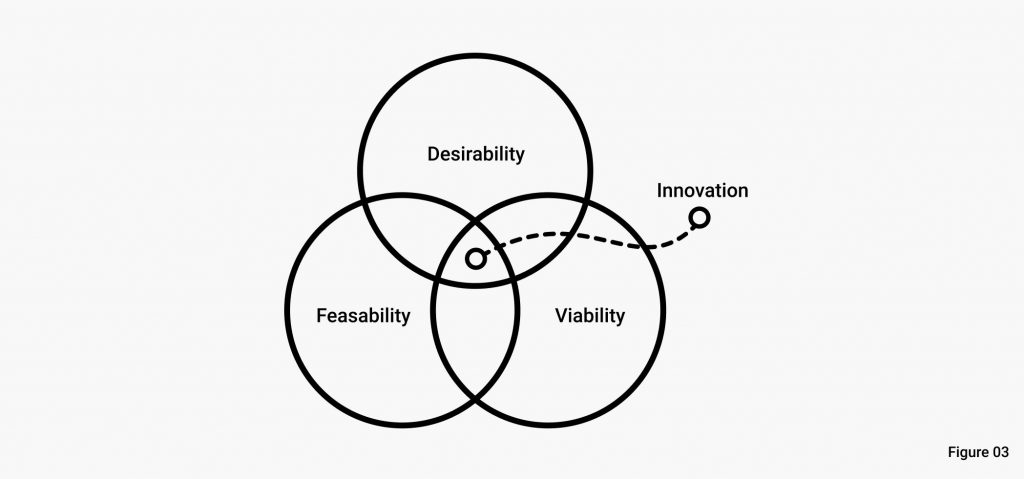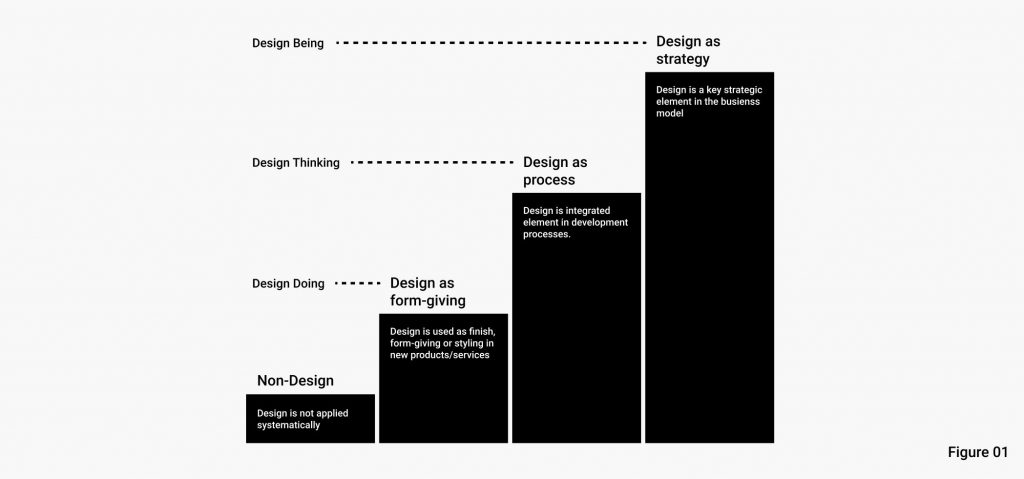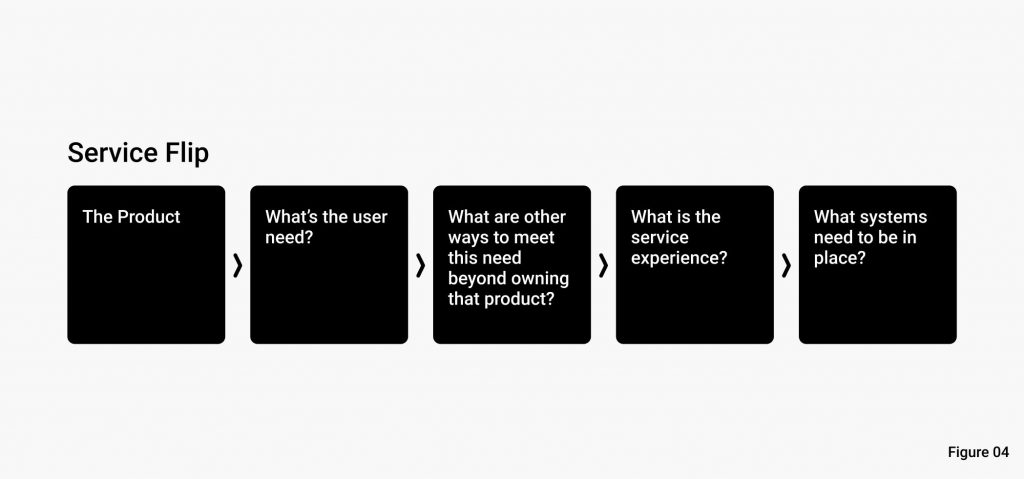by Ayko Neil Kehl for the course ‘Academic Writing by Reinhard Kunz
The Linear World & The Circular World
For many years, our economy has functioned according to a linear principle. Based on the take-make-use-waste approach, this system is depleting the natural resources of our planet. (Stiftung Entrepreneurship, 2019)
The only problem here is that sooner or later you end up with a pile of worthless something. Today we know that this can not continue. (Ellen MacArthur Foundation & IDEO, n.d.)
For this reason, more and more companies and countries are switching to a circular economy. The most important point here is the reuse of used products or materials. A new component is added to the linear economic approach by recycling a product at the end of its life cycle. (Stiftung Entrepreneurship, 2019)
In the linear economy, design happens at the beginning of the process. Something is designed, completed and finally brought to market. In the circular economy, design is a never-ending process. After the life cycle, a new spectrum of possibilities opens up. How can the product still be used? How can we easily separate and recycle the materials? It is the same with an intangible service. The world is changing as fast as ever and so are customer demands and circumstances, which leads to a constantly evolving service that needs to be redesigned again and again. CEO of IDEO, Tim Brown describes it himself as: „Design is never done.“ (Ellen MacArthur Foundation & IDEO, n.d.-a)
So you can see that this is not just about modern product design in the traditional sense. The changes in our world need a mental shift in the minds of companies, countries and humanity in general. Designers are ultimately the creators of the things we use every day. You could almost say that designers are also to blame for many problems, as they are at the origin of all things and strongly influence development. This is where design thinking comes into play.
Design Thinking
Design Thinking is a philosophy and a set of tools to help you solve problems creatively. It’s about emphasizing and figuring out who you’re designing for and what their needs are.
There are many processes to solve problems. But the special thing about Design Thinking is the human-centric approach. Design Thinking looks at all problem solving through the lens of human-centered design. What is important here, however, is that it is not necessarily about what people want, but what is best for the user. (Harvard Business Review, 2019)
Ideas are considered from three perspectives:
- Desirability: What is the customer’s wish/need?
- Feasibility: What is technically feasible?
- Viability: What is a marketable and sustainable business model?

This method ensures that you create something that improves people’s lives, but is also feasible to produce and makes economic sense. So it opens up the ability to design products that are good for humanity, good for the planet and good for business. (IDEO U, n.d.)
How Can Design Help?
However, where exactly can design help now? To understand this, a broader understanding of design is required. We are not only talking about design as a form-giving component but also about design as a process and design as a strategy. Design is therefore not a result, but an approach that is integrated early in the development process. (The Design Ladder: Four Steps of Design Use, n.d.)

There are already some frameworks that help designers to keep the circular economy in focus in their projects. A better-known principle is „the 3 R’s“ – Reduce, Reuse, Recycle. The order is very important. Although the awareness of recycling is steadily increasing and is generally very well received by the population in Switzerland, recycling is not the highest of all things. It would be even better if we could reuse things. However, this is not always in the power of the consumer but often also in the power of the developers of these products. Once we are there, the first step would be to reduce consumption. This does not only mean the end consumers but also the producers, industries, countries and organizations. The power to change lies in the design of systems. (Our Guiding Principle – The 3 R’s (Reduce, Reuse, Recycle), 2019)

In order to achieve innovation in the circular economy, the design agency IDEO, together with the Ellen MacArthur Foundation, has created the „Circular Design Guide“. In this guide, methods are presented that support designers in bringing a new mentality towards the circular economy into their projects.
Service Flip
With the tools of Design Thinking comes the power of understanding the underlying needs of users.
Do you really need a car or do you just need a flexible way to commute? Do you really need a DVD player or just an entertaining evening of television? With the real need in mind you can start thinking about how you could change your product to a service. Switching to a service has many advantages. In addition to increasing customer loyalty, it also allows companies to become more circular. (Ellen MacArthur Foundation & IDEO, n.d.-b)

The example of the jeans brand „MUD Jeans“ shows what a service flip can achieve. With a recycling rate of less than 1% and the ongoing ‚fast fashion‘ trend, an urgent rethink is needed in the clothing industry. The classic way here is usually to sell a product. But CEO Bert van Son realised that there would be a way to get the materials for his product back and still better satisfy the needs of his customers. Because the basic need is not to buy or own a pair of trousers, but a changing wardrobe. Henceforth, MUD Jeans sells its jeans in the a subscription model. You have the option to lease a pair of jeans for €7.50 per month. After one year, the customer has the choice to exchange the jeans for another pair (and continue leasing), to simply keep the used jeans or to end the subscription and return the jeans. In addition, the customer is offered free repairs. So the customer wins by having more flexibility and an optionally ever-changing wardrobe. With the new model, MUD Jeans has a more predictable material supply chain, a lower environmental impact and increased customer loyalty. (The Ellen MacArthur Foundation, n.d.)
Thinking In Systems
Traditional design approaches focus on the needs of the end consumer. To meet the demands of the circular economy we need to approach it from a different angle. Not only the user must be considered here but also the system in which the design is located.
A cup can seem like a very simple thing at the moment of drinking, but the designer behind it has to look not only at the shape of the cup but at the system around it. How is the cup made? Where and to whom is it sold? How long is the life span of the product? And how is it finally disposed of or, even better, recycled and reused? (Ellen MacArthur Foundation, 2016)
What is important in the aspect of the circular economy is that designers take a step back and look at the big picture (system) in which the objects will later be part of. That is why the design process in a circular economy does not end abruptly but leads back to the beginning with feedback loops. (Ellen MacArthur Foundation & IDEO, n.d.-a)
The Role Of A Design Manager?
I hope that by this point it has become clearer to most readers why design is such a powerful tool for creating a more sustainable world. Most companies now realize that they need to use design to compete in the marketplace. The same is true for innovation towards a circular economy. After all, ecological and economic success often run in parallel with some delay. For this reason, it is essential today not to leave the design to chance. Only in this way can companies be sure that they are doing the right thing and doing it right. Design is no longer just the visual polish of a product but also the strategy and process in a cycle of actions. Managing this construct is one of the tasks of a design manager. (Baars, 2020)
But a design manager must also practice with new perspectives that the circular economy demands. User-centred is no longer just laced to the needs of the customer, but to the whole system in which the customer and the design are situated. A design manager must take a step and look at the big picture to develop a solution that is best for the user and the world. What is feasible and what is not, no longer depends only on the obstacles in the initial production. A product in the circular world is made of reusable materials and holds its value far beyond its own life cycle. A product is no longer finished once it is brought to market. Products will be designed more and more like a service. This creates feedback loops that can be used to continuously improve a product. Probably the most important task for the design manager, however, is to change the way people think. Only if we rethink together, companies, organisations and consumers, will we be able to turn the design of the economy upside down and thus work towards a circular world. (Ellen MacArthur Foundation & IDEO, n.d.-a)
During my research, I came across many sources that deal with the topic of design and the circular economy. However, many of them are already several years old, which makes me wonder why there is not more of an open discussion about this crucial subject. It seems to me that the topic is more important and urgent than ever before and yet it is still not a generally known concern. Once you start looking at the circular economy, it opens up a whole new way of thinking. So why are we still talking mainly about recycling instead of reusing or reducing? Why are products still being redesigned without a circular world in mind? I’m sure there has been progress, but I don’t get the feeling that there is a global shift in mindset yet. Normally I would be of the opinion ‚The devil take the hindmost‘. In other terms, those who rethink today are the winners of tomorrow. Those who stand still will fall behind. But when it comes to climate and sustainability, the case is somewhat different. It is essential that we all rethink, not just a few innovative ones. If this does not happen, the question remains how much time we have left to do so.
Source
The Difference Between Linear & Circular Economy. (2019, August 16). Entrepreneurship Campus. https://www.entrepreneurship-campus.org/the-difference-between-linear-circular-economy/
Ellen MacArthur Foundation & IDEO. (n.d.). The Circular Design Guide. The Circular Design Guide. Retrieved April 9, 2021, from https://www.circulardesignguide.com/
Ellen MacArthur Foundation & IDEO. (n.d.-a). Mindsets. The Circular Design Guide. Retrieved April 9, 2021, from https://www.circulardesignguide.com/mindset
Harvard Business Review. (2019, July 23). The Explainer: What Is Design Thinking? [Video]. YouTube. https://www.youtube.com/watch?v=_WI3B54m6SU&feature=youtu.be
IDEO U. (n.d.). Design Thinking. Retrieved April 9, 2021, from https://www.ideou.com/pages/design-thinking
The Design Ladder: Four steps of design use. (n.d.). Issuu. Retrieved April 9, 2021, from https://issuu.com/dansk_design_center/docs/design-ladder_en
Our Guiding Principle – The 3 R’s (Reduce, Reuse, Recycle). (2019, August 22). Live Green. https://livegreen.ch/en/guideline/
Ellen MacArthur Foundation & IDEO. (n.d.-b). Service Flip. The Circular Design Guide. Retrieved April 9, 2021, from https://www.circulardesignguide.com/post/service-flip
The Ellen MacArthur Foundation. (n.d.). Pioneering a lease model for organic cotton jeans. Ellen MacArthur Foundation. Retrieved April 9, 2021, from https://www.ellenmacarthurfoundation.org/case-studies/pioneering-a-lease-model-for-organic-cotton-jeans
Ellen MacArthur Foundation. (2016, November 29). Adopting a systems mindset – Circular Design Guide [Video]. YouTube. https://www.youtube.com/watch?v=ylujl-ZKdq8
Baars, J. (2020, December 7). Was ist eigentlich Designmanagement? PAGE online. https://page-online.de/branche-karriere/was-ist-eigentlich-designmanagement/
Index
Figure 03 – Illustrated by Ayko Kehl, based on
[Innovation]. (n.d.). Https://Www.Ideou.Com/Pages/Design-Thinking. https://www.ideou.com/pages/design-thinking
Figure 02 – Illustrated by Ayko Kehl, based on
Live Green. (n.d.). [Reduce, Reuse, Recycle]. Livegreen.Ch.
https://livegreen.ch/en/guideline/
Figure 03 – Illustrated by Ayko Kehl, based on
The Design Ladder: Four steps of design use. (n.d.-b). [Illustration]. Https://Issuu.Com/Dansk_design_center/Docs/Design-Ladder_en
Figure 04 – Illustrated by Ayko Kehl, based on
IDEO & The Ellen MacArthur Foundation. (n.d.). Service Flip [Illustration]. https://www.ellenmacarthurfoundation.org/assets/design/Service_Flip_Final.pdf

This blogpost already attracts the reader with a very straightforward title. „Design thinking“ and „circular economy“ are two terms, which are separately well-known and used by design management students. However, these two terms in combination make the blog especially interesting and highly relevant to the reader. Accordingly, the first two paragraphs use concise language and supporting visuals to guide the reader through the two terms in a way that is interesting and easy to understand. Thus, the title delivers what it promises.
Overall, the blog convincingly brings its main message across: Design has great power to help change from a linear to a more circular world. Additionally, the writer proposes two important mind shifts today’s designers need to adopt for having a better impact: thinking in systems and providing services instead of products. Beyond that, it would also have been very interesting to learn about further new approaches designers or design managers can adopt.
One thing that could confuse the reader is the suggestion of two different thinking approaches. On one hand, design thinking follows a rather narrow and human-centered approach, and on the other hand systems thinking follows a broad approach. It would have been interesting to learn how these approaches are connected and complementing each other.
Instead of summary, the writer concludes with his personal thoughts regarding the topic. This part is especially valuable, as it also triggers thoughts in the readers. With his statements, he calls on everyone to change their thinking, which is particularly important at this point.
The title already gave me an idea of the topicality and relevance of this article. The introduction of the blog post shows the change in our economy in recent years, from a linear principle to a circular economy. Strong sources are used to show how important the change towards a circular economy is. In this way, the author arouses the reader’s interest in the introduction.
I find the approach of creating an impact on our economy through Design Thinking very interesting. The author describes design thinking as the methodology of the future when it comes to solving problems. With this method, problems are solved through human-centered design.
Using current theories, the author explains how design enables us to move towards the Circular Economy. The statements are reinforced by the illustrations he has created himself – this leaves a very competent impression on the reader.
Ayko Neil Kehl’s blog post is rounded off by drawing a connection to design management. The article makes future design managers aware of their responsibility to solve complex problems. It also triggers the urge to finally work on real-life projects.
claimed by Leandra